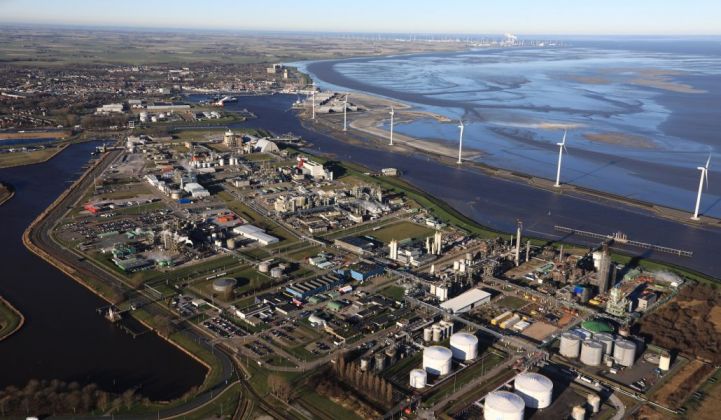Oil major Shell has started feasibility work on what would be the largest green hydrogen project in the world.
The plans would see 3 to 4 gigawatts of offshore wind capacity established in the North Sea by 2030 purely for the manufacture of green hydrogen. Electrolyzers will be based in Eemshaven, along the northern coast of the Netherlands, and potentially offshore as well.
The project could be expanded to 10 gigawatts of offshore wind by 2040 dedicated to green hydrogen production.
Shell Netherlands, Dutch gas grid operator Gasunie and the port of Groningen are the founding partners of the NortH2 project, with the trio looking for others to join the consortium during the one-year feasibility study. They hope to develop a “European Hydrogen Valley” cluster.
Gasunie will develop the network infrastructure required for the storage and distribution of hydrogen.
“This project offers opportunities throughout the entire hydrogen chain,” said Marjan van Loon, president-director of Shell Netherlands, in a statement.
“In order to realize this project, we will need several new partners," van Loon said. "Together we will have to pioneer and innovate to bring together all the available knowledge and skills that are required. The energy transition calls for guts, boldness and action."
Critical to a zero-emissions pathway
Shell already has a 20 percent stake in a consortium building around 730 megawatts of offshore wind off the coast of the Netherlands. The country’s next 700-megawatt auction is scheduled for April this year.
The Netherlands has an offshore wind target of 11.5 gigawatts by 2030. If the NortH2 plan comes to fruition, more than a third of that capacity would have to be contracted exclusively for green hydrogen production.
Shell previously told GTM that subsidy support would be beneficial for the build-out of the green hydrogen economy. Research by Wood Mackenzie analyst Ben Gallagher indicates that power prices of $30 per megawatt-hour and aggressive utilization rates would be needed for the electrolyzers to be competitive with existing hydrogen production methods.
In the joint statement announcing the collaboration, the trio added a caveat: “NortH2's partners anticipate that the initial project phases may require European and national grants available for the decarbonization of energy.”
The outline document of the EU’s trillion-euro Green Deal framework highlight “clean hydrogen” infrastructure and research as priority areas.
Hydrogen is considered an essential component for any credible pathway for industrial nations to reaching net-zero emissions. The Netherlands has previously proposed a 95 percent emissions reduction target, with debate on a national net-zero goal ongoing. A Dutch carbon tax, that would cover emissions from producing hydrogen using methane, is expected to reach €125 ($137) per ton of CO2 equivalent emissions by 2030.
Dutch research organization TNO estimates that 1 ton of hydrogen produced from methane leads to 10 tons of CO2 equivalent.
By 2040, NortH2 could be producing 800,000 tons of green hydrogen, making the carbon tax savings a €1 billion opportunity in 2040, even if the carbon tax rate remains unchanged from 2030.
The market for green hydrogen
The initial plan is to deliver the hydrogen to industrial users in the Netherlands and further afield in northwest Europe.
Gasunie has already installed a 1-megawatt electrolyzer and is working with SkyNRG on a proposed 20-megawatt electrolyzer in nearby Delfzijl. That will use green hydrogen to manufacture renewable methanol as a jet fuel replacement.
Chemport Europe, in Groningen, is responsible for 15 percent of the Dutch chemical industry's output.
The U.K.’s Drax biomass power plant, together with Equinor and National Grid, is planning the addition of carbon capture and storage and hydrogen manufacturing. The hydrogen would be pumped along the Humber estuary, a major industrial hub.
The global market for hydrogen (of all types) is currently 70 million tons. According to electrolyzer manufacturer ITM Power, only 1 million tons are used for energy rather than as an industrial feedstock. As well as being used for transport and heat, hydrogen can also be converted back to electricity.
The Belgian port of Ostend is planning a 50-megawatt electrolyzer, again powered by offshore wind, which it will then pair with a hydrogen-fired power plant demonstration project in 2022. The primary objective is to smooth out differences between Belgium’s marine renewables supply and power demand.




